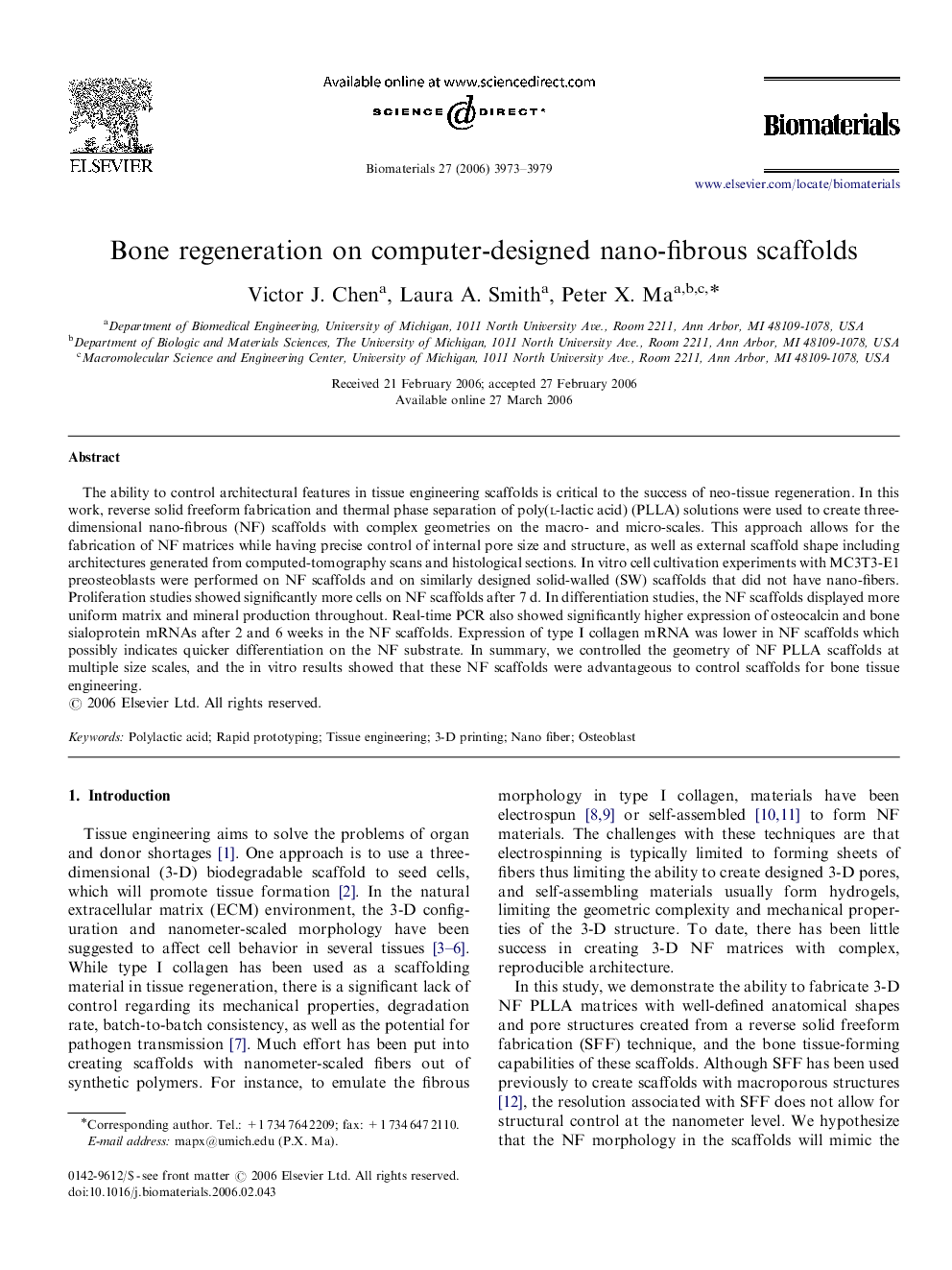| Article ID | Journal | Published Year | Pages | File Type |
|---|---|---|---|---|
| 11404 | Biomaterials | 2006 | 7 Pages |
The ability to control architectural features in tissue engineering scaffolds is critical to the success of neo-tissue regeneration. In this work, reverse solid freeform fabrication and thermal phase separation of poly(l-lactic acid) (PLLA) solutions were used to create three-dimensional nano-fibrous (NF) scaffolds with complex geometries on the macro- and micro-scales. This approach allows for the fabrication of NF matrices while having precise control of internal pore size and structure, as well as external scaffold shape including architectures generated from computed-tomography scans and histological sections. In vitro cell cultivation experiments with MC3T3-E1 preosteoblasts were performed on NF scaffolds and on similarly designed solid-walled (SW) scaffolds that did not have nano-fibers. Proliferation studies showed significantly more cells on NF scaffolds after 7 d. In differentiation studies, the NF scaffolds displayed more uniform matrix and mineral production throughout. Real-time PCR also showed significantly higher expression of osteocalcin and bone sialoprotein mRNAs after 2 and 6 weeks in the NF scaffolds. Expression of type I collagen mRNA was lower in NF scaffolds which possibly indicates quicker differentiation on the NF substrate. In summary, we controlled the geometry of NF PLLA scaffolds at multiple size scales, and the in vitro results showed that these NF scaffolds were advantageous to control scaffolds for bone tissue engineering.
